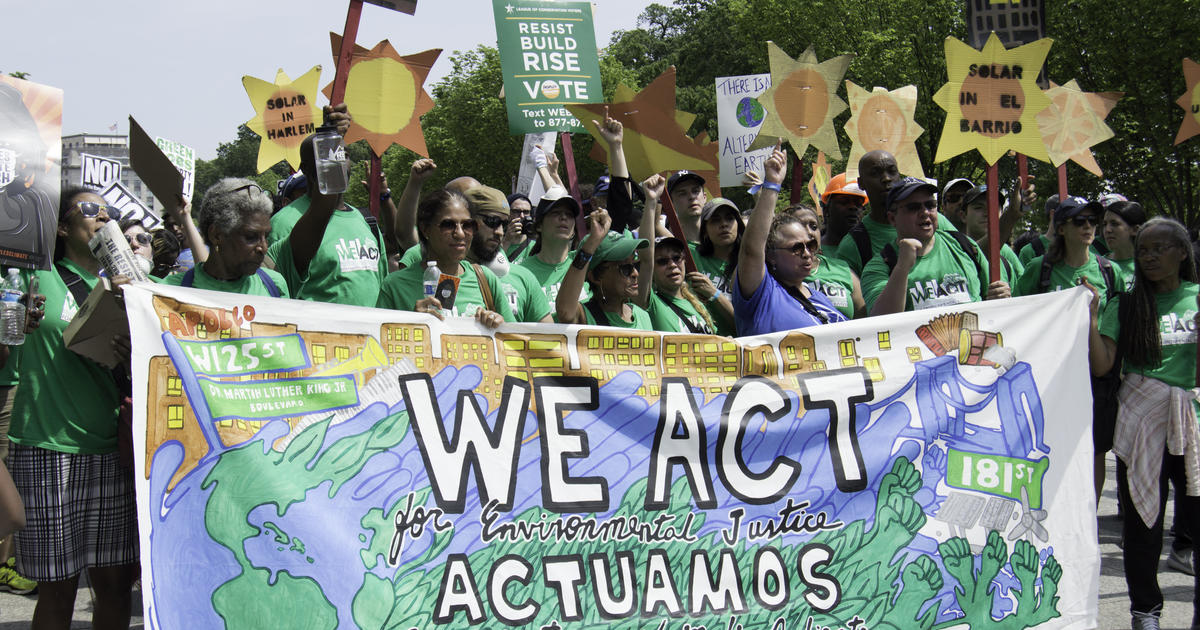States
The Battle Against Environmental Racism In America

Environmental racism disproportionately affects Black communities in the US. State pushback and legal hurdles continue to hinder environmental justice despite pledges. This page discusses environmental racism’s history, current events, and the uphill fight for equality.
Historical Roots Of Environmental Racism
American environmental racism is founded on discrimination and institutional inequality. Communities of color, especially Black communities, have suffered environmental injustices for decades. Zoning and permission choices that locate polluting companies, waste sites, and hazardous facilities near these areas frequently cause these injustices.
This systematic prejudice began with industrial facilities purposely placed near Black areas throughout industrialization. These actions have caused widespread health inequities, economic suffering, and environmental devastation.
Flint, Michigan, experienced lead pollution and a lengthy public health problem after changing its water supply. Environmental racism was widespread in Flint, where most victims were Black.
Recent Developments And Broken Promises
Environmental racism prevention has made progress in recent years. Environmental justice was prioritized by President Joe Biden, giving afflicted people hope. EPA changes strengthened civil rights enforcement to ensure fair ecological policy. These pledges have yet to turn into action.
Recent circumstances indicate that the Biden administration will not move quickly. As communities bear disproportionate environmental costs, the EPA’s Title VI measures have failed. A planned asphalt business in a primarily Black Flint area sparked additional concerns, but the EPA’s responses could not address environmental inequities.
The Uphill Battle For Equality
Fighting environmental racism is challenging on many fronts. The absence of Title VI enforcement of the 1964 Civil Rights Act is a significant hurdle. This law protecting communities of color from government-funded discrimination has been ignored.
Conservative attempts to redefine discrimination by contending that government grant recipients may affect people of color without racism imperiling environmental justice lawsuits. This reinterpretation might shift the burden of evidence, making restitution more challenging for affected communities.
The stakes are more significant than ever in the fight against environmental racism. The racial wealth gap and health inequities have worsened due to enforcement failure. Polluted houses lose value, making homeownership, a vital source of generational prosperity, harder.
Advocates, communities, and environmental justice activists want the EPA and government agencies to keep their pledges and combat ecological injustice. They stress that now is a crucial time to address decades-old inequities in communities of color. Affected communities continue to seek environmental justice and equity in decision-making.
Challenges In Legal Remedies
Legal remedies for environmental racism are complicated and may slow development. This vital law should safeguard communities of color from discrimination: Title VI of the 1964 Civil Rights Act. However, its enforcement has been patchy and often insufficient.
Putting the burden of evidence on impacted populations is challenging. Communities must show that government-funded acts caused disproportionate harm to submit a Title VI complaint. Polluters might avoid responsibility because discriminating intent is hard to prove. Already, underprivileged populations must compile considerable proof and negotiate intricate legal procedures to overcome this obstacle.
Additionally, the complaint procedure is opaque. Many impacted groups struggle to grasp the Title VI complaint procedure, which may be lengthy. Lack of clarity may prevent communities from pursuing legal remedies, prolonging environmental injustices.
Environmental justice is threatened by the legal effort to characterize discrimination as racial intent rather than disproportionate effects. If this trend continues, minority groups may have fewer legal options to fight environmental racism.
Read Also: A Fight Against The Effects Of Sugarcane Burning By Florida’s Generation Z
The Power Of Grassroots Activism
Despite these obstacles, a grassroots movement has become a formidable environmental racism fighter. Environmental justice activists, community groups, and impacted citizens are working together to raise awareness demand responsibility, and change.
The Flint community’s activism is significant. Flint citizens continue to fight for justice despite a water crisis and environmental issues. They have protested, complained, and advocated to hold decision-makers responsible.
Other states have seen grassroots movements grow. Residents of St. James Parish in Louisiana and Mississippi River villages are protesting environmental injustices. They are speaking out against their injustices and demanding fairness.
Action by grassroots activists increases awareness and pressures government institutions and politicians. Remember that the struggle against environmental racism is a social and political movement led by those most impacted, not only legal fights.
Environmental Justice As A Nationwide Issue
Environmental racism is a national problem that requires a coordinated solution. Environmental discrimination affects underprivileged populations, notably Black communities, who endure the disproportionate cost of pollution and environmental threats.
Environmental racism must be addressed beyond individual incidents and complaints. To assess and correct environmental decision-making discrepancies, a nationwide strategy is required. This strategy should include federal and state agencies and environmental justice at all levels.
Environmental justice is directly tied to climate change and sustainability debates. Environmental justice must be critical to efforts to cut greenhouse gas emissions and change to a more sustainable future. Neglecting underprivileged populations in climate action perpetuates inequality.
The Role Of Government Agencies
Government agencies are crucial to resolving environmental racism, as their actions (or inaction) may influence impacted populations. The Environmental Protection Agency (EPA) enforces Title VI of the Civil Rights Act, although many obstacles have hampered its efforts.
The lack of environmental justice resources and personnel is a significant problem. The EPA’s Office of Environmental Justice has struggled to address communities of color’s many concerns due to financial and personnel difficulties.
EPA enforcement is generally reactive rather than proactive. The government usually responds to complaints rather than proactively identifying and fixing environmental prejudice. Addressing environmental injustices might take time with this reactive strategy.
EPA environmental justice activities have increased in recent years. The Biden administration has prioritized these issues and received more Title VI complaints each month than previous administrations. The exact effect of these activities is unknown.
Environmental Justice In The Period Of Climate Change
This campaign against environmental racism is happening amid a worldwide climate catastrophe. Climate change, from harsh weather to rising sea levels, disproportionately affects underprivileged populations, particularly Black communities.
Climate change worsens environmental injustices by increasing health risks and economic inequality. Climate change-related heatwaves and severe weather events might disproportionately damage populations without enough healthcare, housing, or adaptation resources.
Environmental justice has possibilities and problems as the world becomes more sustainable and carbon-neutral. Renewable energy projects have potential, but they must not replicate past injustices by burdening Black communities with the detrimental effects of new technology and industries.
A meaningful transition to a greener economy involves equality and inclusion to benefit underprivileged people from sustainability’s economic and environmental benefits. This transformation should emphasize job growth, education, and healthcare in historically disadvantaged communities.
The Path Forward: Equitable Solutions
A comprehensive and fair strategy is needed to address environmental racism and advance environmental justice. It’s not enough to fix past wrongs; we must establish a future where all communities, regardless of race or class, can prosper in a clean and healthy environment.
Legal, policy and grassroots activities are required to attain this aim. Federal and municipal governments must emphasize environmental justice in their decision-making. This entails thoroughly assessing project effects on underrepresented populations and aggressively addressing inequities.
Title VI of the Civil Rights Act impacted communities should have better access to legal remedies. This involves streamlining the complaint procedure, supporting complainants, and dedicating enough resources to implement environmental justice legislation.
Community participation and grassroots activity are crucial to fighting environmental racism. Communities should be empowered to speak out, demand responsibility, and participate in well-being decisions. Grassroots movements have repeatedly changed things and raised awareness of environmental justice.

-

 States2 weeks ago
States2 weeks agoPearlie Golden 93-Year-Old Black Woman Shot By Texas Cop
-

 States2 weeks ago
States2 weeks agoTragedy Unveils Racial Tensions Tarika Wilson Story
-

 States2 weeks ago
States2 weeks agoLayers Of Racial Tension The Mario Woods Tragedy And San Francisco Path To Justice
-

 States2 weeks ago
States2 weeks agoLynching Of Thomas Shipp Tragedy Of Racism Echoes Through History
-

 States2 weeks ago
States2 weeks agoThe Killing Of Terence Crutcher And The Fight For Racial Justice

















You must be logged in to post a comment Login